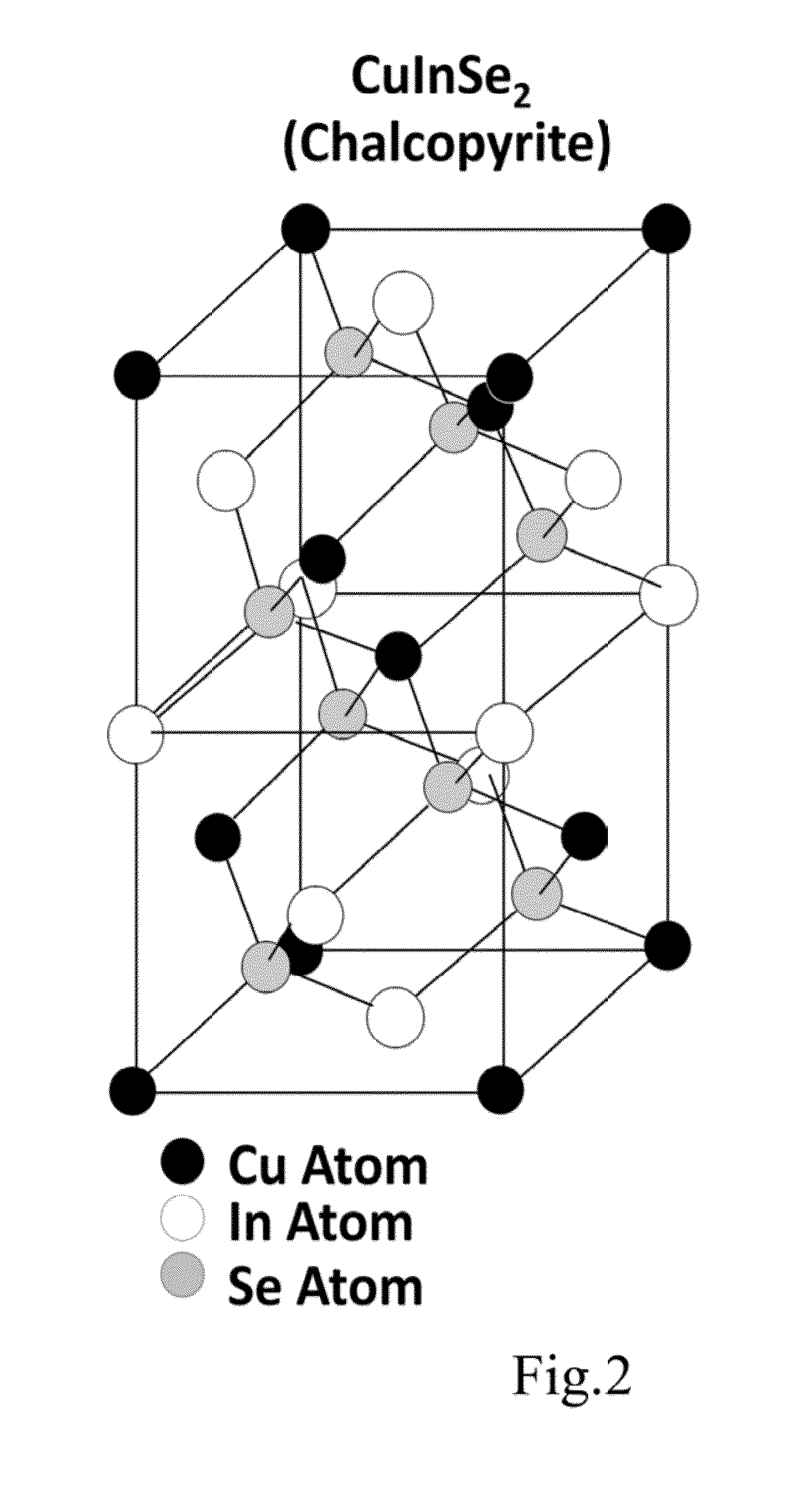Method for making Cu2-xSe nanoparticles and method for making deposited Cu2-xSe thin film by electrophoresis
- Summary
- Abstract
- Description
- Claims
- Application Information
AI Technical Summary
Benefits of technology
Problems solved by technology
Method used
Image
Examples
first embodiment
[0107]This is an embodiment illustrative of the materials involved in the embodiments of the present invention.
[0108]To implement the present invention, the following materials can be used:
[0109]a. Copper (I) Chloride (CuCl): 99.9%, purchased from Wako Pure Chemical Industries, Ltd.
[0110]b. Selenium (Se): powder, 99.7%, purchased from Acros Chemicals Inc., U.S.A.
[0111]c. Tri-n-octylphosphine (C24H51P, TOP): 90%, purchased from Alfa Aesar Chemical Company Inc., U.S.A.
[0112]d. 1-Dodecanethiol (C12H26S, DT): 98.5+%, purchased from Acros Chemicals Inc., U.S.A.
[0113]e. 1-Octadecene (C18H36, ODE): 90%, purchased from Acros Chemicals Inc., U.S.A.
[0114]f. Methanol (CH3OH): 99.9%, purchased from C-ECHO.
[0115]g. Ethanol (C2H6O): 99.9%, purchased from Mallinckrodt Baker, Inc. Phillipsburg.
[0116]h. Chloroform (CHCl3): 99.99%, purchased from C-ECHO.
[0117]i. Acetone (CH3COCH3): 99.9%, purchased from C-ECHO.
second embodiment
[0118]The present embodiment relates to a method for making Cu2-xSe nanoparticles.
[0119]With reference to FIG. 6, the method of the present embodiment for making Cu2-xSe nanoparticles included steps as follows:
[0120]a. A three-necked bottle was connected with a graham condenser 10, rubber tubings 20 were connected with the graham condenser 10 to provide water, and the installation was degassed with nitrogen, as shown in FIG. 7.
[0121]b. 3 mmol of CuCl was dissolved in 6 mL of DT and then 12 mL of ODE was added into the DT, the resulting solution was opalescent and turbid at that moment, the resulting solution was then stirred and heated to 180° C. to obtain a copper (I) chloride solution, and the color of the copper (I) chloride solution was golden at that moment.
[0122]c. 1.64 mmol of selenium powder was added into 2.7 mmol of TOP, and the resulting solution was heated to 50° C. and stirred at the same temperature to obtain a selenium solution, and the color of the selenium solution,...
third embodiment
[0128]The present embodiment relates to a method for making a deposited Cu2-xSe thin film by electrophoretical deposition.
[0129]With reference to FIG. 8, the method of the present embodiment for making a deposited Cu2-xSe thin film by electrophoretical deposition included steps as follows:
[0130]a. Cu2-xSe nanoparticles prepared by the second embodiment were weighed to a proper scale and added into 60 mL of ethanol to obtain an ethanol solution containing Cu2-xSe nanoparticles.
[0131]b. The ethanol solution containing Cu2-xSe nanoparticles prepared by step a was sonicated for 3 days and nitric acid was added into the ethanol solution containing Cu2-xSe nanoparticles to adjust the pH value.
[0132]c. A steel substrate and an ITO substrate were prepared wherein the two substrates were of the same size, the steel substrate was washed with acetone and DI water and the ITO substrate was washed with DI water, and then the two substrates were dried with nitrogen.
[0133]d. The ethanol solution c...
PUM
 Login to View More
Login to View More Abstract
Description
Claims
Application Information
 Login to View More
Login to View More - R&D
- Intellectual Property
- Life Sciences
- Materials
- Tech Scout
- Unparalleled Data Quality
- Higher Quality Content
- 60% Fewer Hallucinations
Browse by: Latest US Patents, China's latest patents, Technical Efficacy Thesaurus, Application Domain, Technology Topic, Popular Technical Reports.
© 2025 PatSnap. All rights reserved.Legal|Privacy policy|Modern Slavery Act Transparency Statement|Sitemap|About US| Contact US: help@patsnap.com



